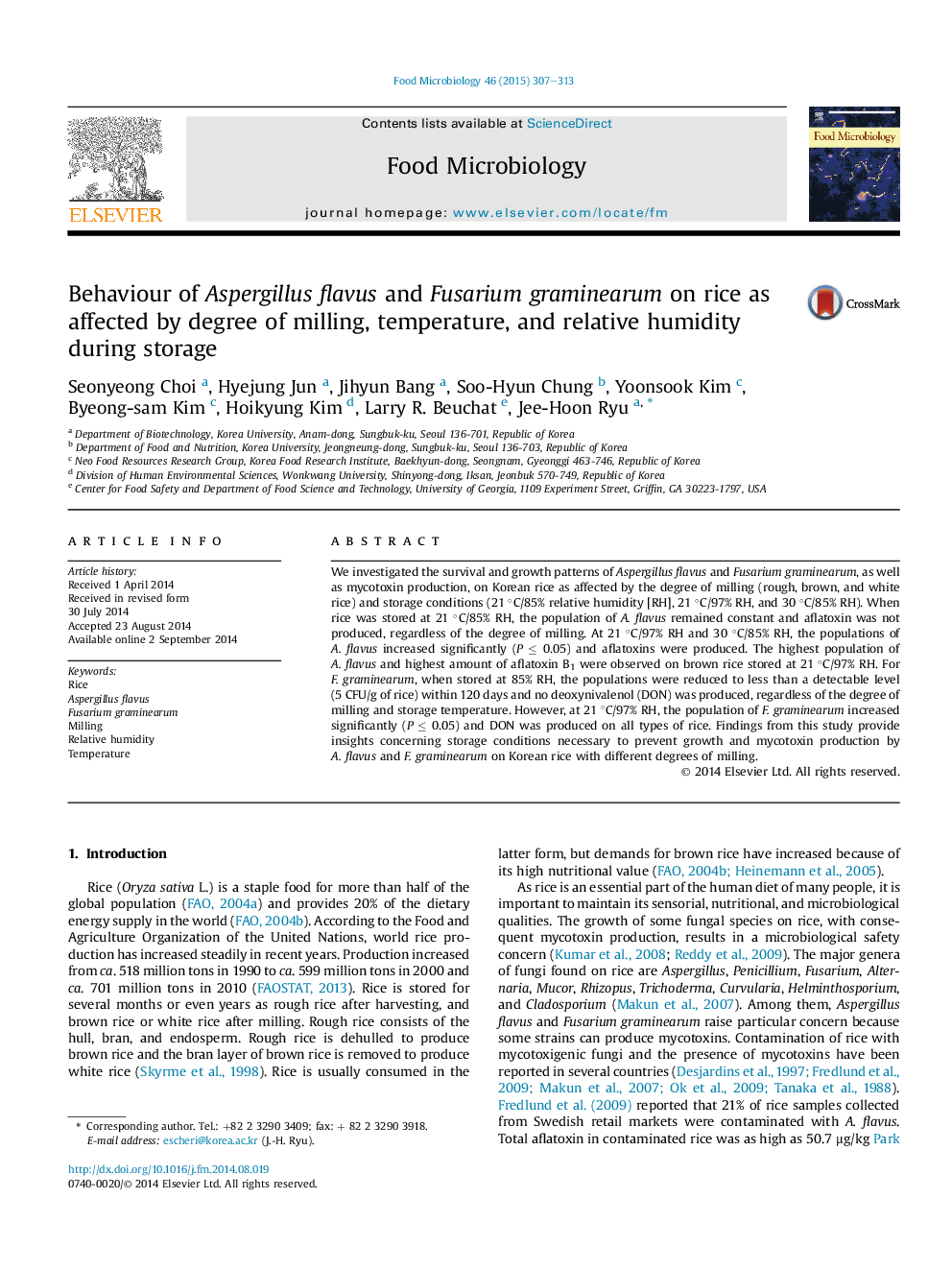| Article ID | Journal | Published Year | Pages | File Type |
|---|---|---|---|---|
| 6288561 | Food Microbiology | 2015 | 7 Pages |
Abstract
We investigated the survival and growth patterns of Aspergillus flavus and Fusarium graminearum, as well as mycotoxin production, on Korean rice as affected by the degree of milling (rough, brown, and white rice) and storage conditions (21 °C/85% relative humidity [RH], 21 °C/97% RH, and 30 °C/85% RH). When rice was stored at 21 °C/85% RH, the population of A. flavus remained constant and aflatoxin was not produced, regardless of the degree of milling. At 21 °C/97% RH and 30 °C/85% RH, the populations of A. flavus increased significantly (P â¤Â 0.05) and aflatoxins were produced. The highest population of A. flavus and highest amount of aflatoxin B1 were observed on brown rice stored at 21 °C/97% RH. For F. graminearum, when stored at 85% RH, the populations were reduced to less than a detectable level (5 CFU/g of rice) within 120 days and no deoxynivalenol (DON) was produced, regardless of the degree of milling and storage temperature. However, at 21 °C/97% RH, the population of F. graminearum increased significantly (P â¤Â 0.05) and DON was produced on all types of rice. Findings from this study provide insights concerning storage conditions necessary to prevent growth and mycotoxin production by A. flavus and F. graminearum on Korean rice with different degrees of milling.
Related Topics
Life Sciences
Agricultural and Biological Sciences
Food Science
Authors
Seonyeong Choi, Hyejung Jun, Jihyun Bang, Soo-Hyun Chung, Yoonsook Kim, Byeong-sam Kim, Hoikyung Kim, Larry R. Beuchat, Jee-Hoon Ryu,
